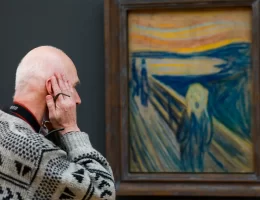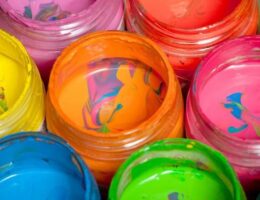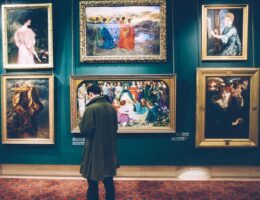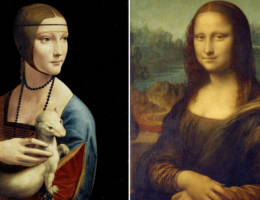IRAN ART EXHIBITION: PAINTING LIKE OTHER ARTS OF IRAN HAS ROOTS IN ANCIENT TIMES
The history of the art of painting in Iran, goes back to the cave age. In the caves of Lorestan province, painted images of animals and hunting scenes have been discovered. Paintings discovered by W. Semner, on the walls of buildings, in Mallyan heights, in Fars, belong to 5,000 years ago. Paintings discovered on earthenware in Lorestan, Sialk and other archaeological sites, prove that the artists of this region were familiar with the art of painting.
From the Parthian era, few mural paintings, most of them discovered in the northern parts of Euphrates river, have been uncovered. One of these paintings is a display of a hunting scene. The position of riders and animals, and the style in this work reminds us of the Iranian miniatures. But in the paintings of Achaemenids era, profile work was preferred by the artists. The proportion and beauty of colors of this era, are remarkable. The colors are shadeless, and have the same tune. In some cases, black stripes limited the colorful surfaces.
Mani, the Iranian painter, who lived about the 3rd century, was a skilled and expert painter. His paintings were thought to be part of his miracles. The paintings of Torfan, discovered in the desert of Gall, a region situated in the Turkestan province in China, belong to 840 to 860 AD. These mural paintings exhibit Iranian scenes and portraits. Imagines of tree branches also exist in these paintings.
The most ancient paintings of the Islamic periodic, are quiet scare, and were created in the first half of the 13th century. Iranian miniatures (fine and small drawings) came to Fife after the fall of Baghdad (1285 AD). Since the beginning of the 14th century, handwritten books were adorned by the scenes from battle fields, feasts and hunting. China, perhaps since the 7th century, as an artistic center, has been the most important incentive for the art of painting in Iran. Ever since, a relation has been established between Buddhist Chinese painters and, Iranian artists. From the historic viewpoint, the most important evolution in Iranian art, has been the adoption of Chinese designs and coloring which were mixed with the specific conception of Iranian artists. The extreme beauty and skill of Iranian paintings are laid to describe.
IRAN ART EXHIBITION: In the first centuries, after the emergence of Islam, Iranian artists began adorning books. The preface and the margins of books were adorned with. These designs were passed on, through on to the next centuries, together with precise principles and rules, which is known as the “Art of Illumination”. The art of illumination and adoring books made its path of progression under the Saljouk era, Mogol and Timourid’s reigns.
Paintings from the beginning of the Islamic period had the reputation of belonging to Baghdad school. Miniatures of Baghdad School, have totally lost the style and methods of the usual paintings of the pre-Islamic period. These primitive and innovative paintings do not possess the necessary artistic stress. The miniatures of Baghdad school are not proportional. Portraits show the Semitic race and light colors are used.
Artists of the Baghdad school, after years of stagnancy, were eager to create and innovate. The particular views of this school, is in drawing animals and illustrating stories. Although the Baghdad school, considering the pre- Islamic art, is to some extent, superficial and primitive, but the art of Iranian miniature, in the same period, was widespread in every region in which, Islam was propagated: Far East, Africa and Europe.
Among illustrated books in the Baghdad style, “Kelileh and Demneh” can be named. Images are painted larger than normal and are not proportional. Only few colors are used in these paintings. Most of the handwritten books of the 13th century are enriched with images of animals, vegetables and illustrations from fables and stories.
There remains two valuable illustrated books from the reign of Baisongor. One, being the Kelileh and Demneh and the other, Baisongor’s Shahnameh (epic of kings). In the drawings of Shahnameh, painted in 1444 AD in Shiraz, interesting examples of Iranian miniature art can be seen. One of these drawings represents a beautiful scene from an Iranian court, painted in the Chinese style. White and blue tiles and Persian carpets are drawn in geometrical shapes.
In one of the manuscripts of the book of “Khamseh Nezami”, exist 13 excellent miniatures, drawn by Mirak, the famous painter and calligrapher. The sensitive and artistic spirit of Baghdad’s paintings are represented in the drawings of another volume among the works of Khamseh Nezami. This precious work is preserved in “British Museum”. One of the liveliest paintings of this book, shows the construction of Jozanag palace. In this painting, masters and architects are busy building the palace. This miniature was painted in 1494 in Herat.
IRAN ART EXHIBITION: Behzad, the greatest painter of the Herat School, expanded the delicate art of miniature. He invented new patterns for natural facts and portraitist which did not exist before his time. One of the masterpieces of the Iranian art of painting is an illustrated book of Shahnameh, preserved in the library of Golestan palace in Tehran. This Shahnameh was also illustrated under Baisongor, the Timourian prince, and belongs to the Herat School. The paintings of this book, from the view point of coloration and proportion of the components in the images are at the highest degree of beauty and firmness.
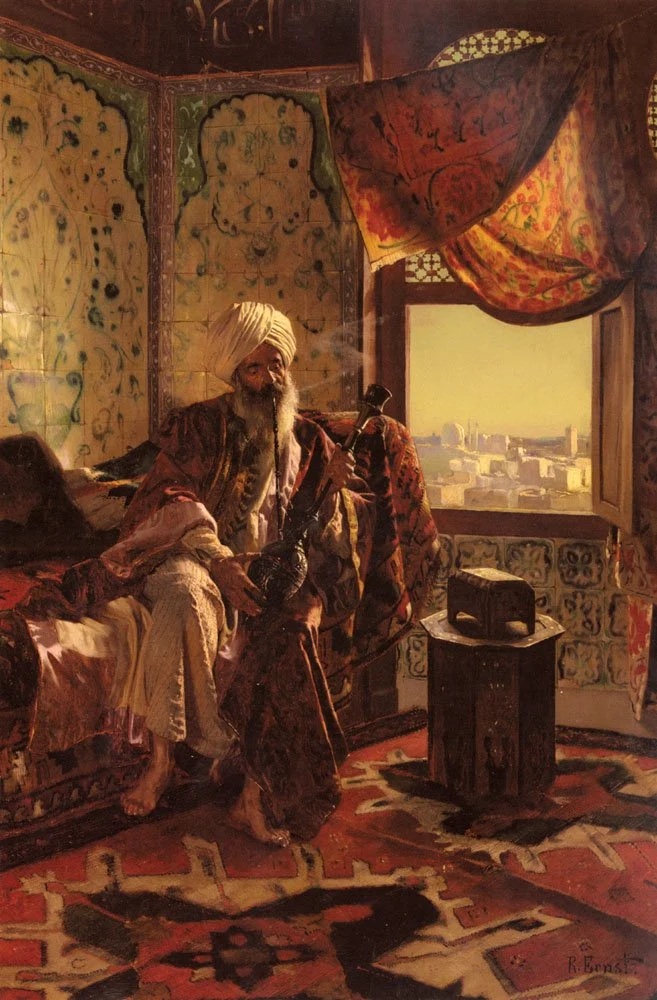
During the Safavid era, the artistic center was moved to Tabriz. A few artists also settled in Qazvin. But the Safavid School of painting was established in Esfahan. The miniature of Iran, in the Esfahan of Safavid era, was detached from the influence of the Chinese out and stepped on a new road. The painters were then more inclined towards naturalism. Reza Abassi, founded the “Safavi School of painting”. The art of design during the Savafids subjected to a brilliant transformation. The design, which is one of the most elegant Iranian designs, was made possible by the talent of the artists of the Safavid School. Miniatures created under the Safavi School, were not exclusively aimed for adorning and illustrating books. The Safavi style is softer in form than those of the Timourid School, specially the Mongolian.
Human images and their behavior are not vain and artificial, in the contrary quiet natural, and close to reality. Safavid painters also manifested a special expertness in humeral paintings. The most magnificent example of the paintings of this period exists in the palaces of “Chehel Sotoun” and “Ali Qapoo”. In Safavid paintings, the splendor and the grandeur of this period is the main attraction. The themes of the paintings are about the life in the royal court, the nobles, beautiful palaces, pleasant goodness, scenes of battles and banquets. Humans are drawn in sumptuous garments, handsome faces and elegant statues colors are glowingly bright.
IRAN ART EXHIBITION: The art of painting, during the Safavid era expanded both in quantity and quality. In the works of this period, a greater freedom, skill, and power can be seen.
The Iranian paintings, through their richness, offer a special joy unlike anything else. They keep a vast connection with the epic stories. In Iranian paintings, the nude body of a human is not a way of expression. Iranian painting is considered as one of the greatest schools of Asia. Splendor and luminosity have not been better expressed in any other culture. Bright skies, astonishing beauty of spring blossoms, and among them, humans with splendid garments who hate and love, are jovial or melancholic, form the general themes of the Iranian painting.

